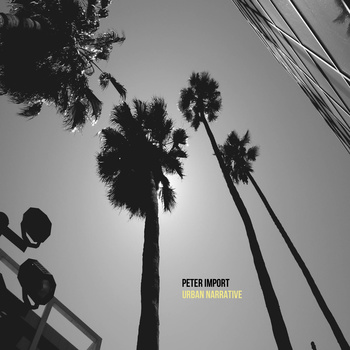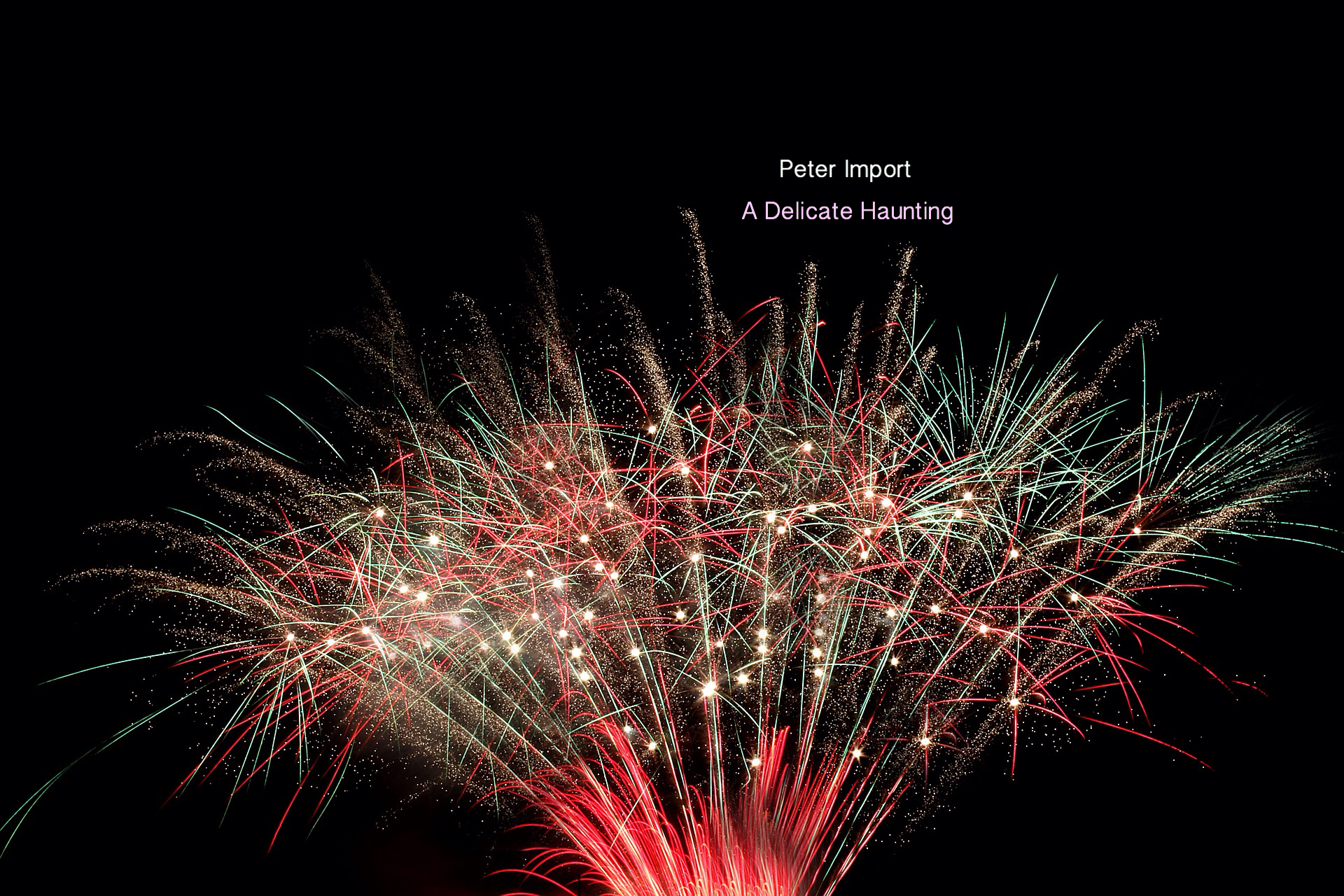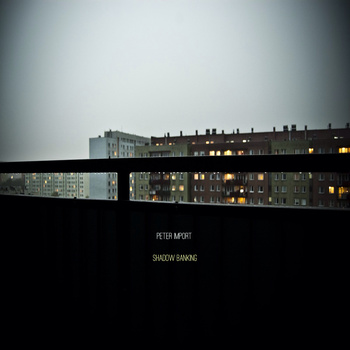

A graduate of Full Sail University's music production B.Sc. program, Peter spent several years scoring and creating sound design for indie feature films, documentaries, and iOS apps before beginning his writing career. In the time since, he's written over fifteen books spanning the genres of middle grade, young adult, to adult.
He's represented by Joanna MacKenzie of Nelson Literary.
(Classical) (Electronic) (minimalist)
Music with a concentration on rhythm, melody and pulse with sound libraries that include Kontakt, Absynth, Reaktor, Evolve, Philharmonik and over 100 gigabytes of SFX libraries.
MUSIC SAMPLES
-
Peter Import
-
Peter Import
-
Peter Import
-
Peter Import

Hespen Henry & The Art of Elegies
Middle Grade Fantasy, 2015
The Man From Las Vegas
Literary Fiction, 2015
Beneath A Great Skeleton-Moon
Literary Fiction, 2015
Computer-Level Sky
Young Adult Contemporary (novella), 2015
West & Pacific
Literary Fiction, 2015
New Los Angeles 2645
Literary Thriller, 2016
Redeemer
Literary Fiction, 2017
Destruction Theater
Literary Fiction, 2017
The Lion Handler's Daughter
Literary Fiction, 2017
The Strange Life Of Oliva Dares
Literary Fiction, 2017
JoyWorld, Idaho
YA Magical Realism, 2017
The Distortionist
Thriller, 2017
The Forbidden Ark Contest
YA Fantasy, 2018
The Curious Nature of Celestial Phenomena In Transit
YA Magical Realism, 2018
Invisible
Mystery/Thriller, 2018
Point Station Fifteen
Mystery/Thriller, 2018

List of credits
Composer, feature film: Tree Without Roots
Composer, short film: Neon Love
Composer/Sound Editor/Sound Designer: Samsung Tablet Educational Series
Foley Artist, feature film: The Runaway
Composer/Sound Director: Pipewords iOS app
(https://itunes.apple.com/us/app/pipewords/id610346822?mt=8)
Sound Designer/Foley Artist, feature film: Imagination Thief
(http://www.imdb.com/title/tt2566948/)
Post Sound Editor: The Invisible Man web series
Sound Designer, Mosa Mack educational science series
Composer, short film: Breaking News (Austin 48 hour film festival)
Composer, documentary short: Fantastic Voyage
Composer/Sound Designer, documentary: Along The Line
Sound Designer, feature film teaser: Out For Blood
The Scenic Sublime: (Post)structuralism & Ecomimetics in Invisible
On Fairy Tales & Meta-Narratives
Peter Import
I
princes, princesses, dragons
*
According to structuralist ontology, ‘archetypes’ function not only as foundational, a priori elements of a cultural text, they reveal how identity and genre are established within a narrative. Why are texts such as Cinderella, Hansel & Gretel, and Snow White fairy tales? Beyond the norms and morals they endorse, what is it about the form, structure, and discourse of each text that establishes them within the ‘fairy tale’ tradition?
While a hermeneutic reading might reveal ethical norms and tropes these works hold in common, a structuralist reading will look to uncover similarities in both plot (narratology) and how language functions within and between each text. Plot themes such as interdiction/violation, mediation, and villainy inform the structure of a collection of stories, establishing them within the folktale tradition.
The concept of identity, for example, within a fairy tale is—much like the semiological concepts of signifier/signified—formed only relationally, when considered in the context of other identities within the story. The antagonist is only an antagonist through their interaction with the protagonist; the protagonist is only a protagonist through their interactions with—struggles against, ultimate conquest of—the antagonist. Considered in isolation, a character has no discriminating self, no personal agency: without a fair-haired maiden to rescue from the clutches of a nefarious fire-breathing dragon, the concept of the ‘prince’ means nothing—he might be a character, but he is no longer recognizable as a prince. Similarity and difference are what imbue a story with meaning, just as, in structuralist linguistics, a signifier and signified are only comprehensible when considered in relation to every other signifier and signified. The signifier house signifies house only because house doesn’t signify sky.
Thus the deterministic plot structure of a folktale functions as a macrocosm of the linguistic foundations of structuralism itself. The stable, objective (and Formalist and New Critical-influenced) concept of langue—the structure of language—might be interpreted as the myth/fairy tale genre itself; parole—the speech act—could be each unique story, its plot a structure within a structure, the linguistic form a structure within that structure, etc.
Extrapolating beyond the realm of myth, it’s useful to explore how these mythic archetypes spill over into other cultural texts. Does every story (with a conventional narrative structure) contain such archetypes, even obliquely veiled, as ‘prince’ or ‘dragon?’ Do these archetypes exist as non-human, non-sentient significations within a text; and if so, why?
The character of Soley, in Invisible, enacts the narratological archetype of the Return Home. Her quest (like virtually every other protagonist in the history of fiction) is one of personal redemption, her reluctance to return to Alaska signifying her subconscious aversion to accepting the truth of her sister’s death. Certain other images and plot functions within the story serve to signify ‘returning’: Soley discovering the doors to Graham’s house, and Benidikt’s cabin, open (and Erik’s front door having been discovered open the night he died)—both times Soley encounters a door open, she hesitates, fearing what she might encounter passing through it. The unbelievable—paranormal—circumstances of Erik’s death signify the physical unsettledness Soley feels in returning to Alaska; and the guesthouse (a sort of meta-home), where Soley simultaneously is and isn’t (in her own room, still able to hear her father and Lisebet puttering in the lobby and dining hall, while remaining isolated) signifies presence and absence, thereness and not-thereness, paradigmatic of Soley’s character in the narrative.
While narratological readings of fairy tales might be concerned with plot construction, structuralism in general is more concerned with word choice and sentence structure. It’s at this micro-level of the text that the concept of voice—that of the narrator, not the author—emerges; and where the magic lies.
II
Metaphysics of Voice
*
Structuralism, like aestheticism, considers language to be world-creating; reality-constructing. The Kantian notion that reality (phenomena) conforms to categories of the mind carries over (according to some critics, too much[1]) into structuralist/linguistic theories of sentence structure. Barthes, for example, claims that to every signifier there is attached a second, more ambiguous meaning—a ‘connotation’—which can vary according to reader and context. Consequently there exists an additional layer of conceptional meaning to be interpreted in the text, one that varies from reader to reader.
The relations of signs in a sentence are known as axes. The syntagmatic axis refers to the location of each word in a sentence; the paradigmatic axis refers to a sentence’s word choice: which signs are chosen over others, and how these choices affect the meaning of the sentence. Though the paradigmatic axis is of more interest to structuralists, the syntagmatic axis is just as important in the construction and analysis of a text’s voice.
In creating a voice for a narrative (in Invisible, Soley’s) there’s an element of the metaphysical—bringing to life an identity through language—though to construct that voice is to privilege a linguistic structure, a set or ‘series’ of words for the character to use. In this context each utterance of the narrator becomes a signifier; the narrative self the signified. What the narrator wouldn’t say is never said; the identity of the narrator (like the role of signified/signifier) is defined by difference. The voice is that specific voice as much because of the words they don’t use, as much as the words they do.
Of note as well is the unique role voice plays in formulating ‘creative play’ along the paradigmatic axis. By establishing a ‘quirky’ or singular metaphysical voice, possible word choices, turns of phrase, and other literary gestures can be deployed without seeming distracting or out of place.
As regards the metaphysics of identity, a classic paradox invoked (but not advanced) by thinkers such as Heraclitus and Plato is the story of the Ship of Theseus. Though the paradox is most often cited in the context of personal identity theory, it remains relevant in the context of structuralist linguistics.
At what stage, if one by one a ship’s (S1) planks were replaced, does the ship become another ship (S2)? If every plank of the ship is refurbished and replaced with another, is the ship still the Ship of Theseus (S1)? Hobbes further complicated the paradox by proposing that one take the old planks of S1 and reconstruct the original Ship of Theuseus S1. According to Hobbes, the original ship S1 and the refurbished ship S2 share the same form, and the original ship S1 and the reconstructed ship S3 share the same matter.[2] This is all to say (circuitously) that that the paradigmatic axis of a text is crucial to defining a metaphysical voice; and that replacing a signifier with one that is aesthetically at odds with the text’s overall voice is to alter it irrevocably.
Though critical analysis is at its heart metalingual (it employs metaphor and analogy to analyze metaphor and analogy) it might be useful to imagine the voice of a first-person text as a brick wall: remove a brick, replace it with another brick, and the wall (while remaining a wall) changes. Is it the same wall? If the wall has changed, what about it has changed—its essence, or appearance? In a similar way the voice of a first-person text changes inherently when the paradigmatic axis does.
The implications of this drift into critical theories such as Reader Response Theory. A reader, their first time encountering a text, experiences the first-person narrator by degrees, sentence by sentence, until (however long it might take) they have some general notion of the voice as a metaphysical presence. However, if a reader encounters a word they don’t believe the character (the metaphysical self invented by the text) would use, their immersion in the text and their faith in the constructed self it creates can be disrupted.
Linguistic devices such as metaphor and metonymy not only add layering and ambiguity (what might be considered Russian Formalist conceptions of ‘literariness’) to a text, they help add depth to a text’s metaphysical voice. In Invisible, Soley often uses metaphor to express her inner subjective states, giving her voice an ontological depth (introducing signifiers that might not be used if not for the use of metaphor), and straying from the first-person voice’s tendency to directly relay feelings and emotions. To wit: “I could feel my heart beating quickly”; vs. “My heart was beating like a drum.” There were bumps in the road when creating Soley’s voice: in early drafts of the manuscript, Soley would employ what one reader called ‘Britishisms’—words and phrases an American (or Canadian) wouldn’t use. Though in this case, many of these phrases bled into Soley’s voice from outside texts (presupposing a poststructuralist blurring of meanings and contexts), this was a lesson in the importance of establishing a realistic, accurate associative—paradigmatic—context for a first-person voice: readers, sometimes better than writers, notice when a brick in the wall doesn’t fit.
III
Benidikt as the Postmodern
*
Postmodernism, though an involuted term (used often interchangeably with the term poststructuralism, though poststructuralism implies some relation to linguistics) influencing disciplines ranging from geography to gastronomy to architecture, broadly rejects foundationalism and a stable, objective idea of Truth. The Nietzschean claim that ‘God is Dead’ (the death of the ideal, of the Kantian notion of the noumenal, of the Platonic form) anticipated Barthes’s conception of the Death of the Author, and heralded poststructuralism’s skepticism towards the real and given. Belief in meta-narratives such as Marxism, free market capitalism, and science were eschewed in favor of artistic gestures such as irony, disruption, and self-reference.
It was the Derridean practice of deconstruction, however, that upset the presumed-to-be fixed (objective) relationship between signified and signifier. To deconstruct a text is to look for contradictions or silences; to read for meanings that might otherwise have been overlooked or denied. The Derridean ideas of différance (the difference, or deferral, of meanings of a signified: i.e., can one imagine ‘sky’ without imagining cloud, blue, sun?) and trace (other signifiers that a signifier is ‘haunted’ by) permit the reader access to deeper meanings of a text that have been obscured.
Derrida, in his work Spectres of Marx—an examination of the ‘atemporal nature of Marxism’[3]—introduced the term ‘hauntology’: the idea that the past lingers in the present (a term ostensibly influenced by Marx’s remark in the Communist Manifesto “A spectre is haunting Europe…”). This idea of ‘hauntology’—of a temporal and ontological dislocation[4]—is handy when examining the silent/unseen/neglected characters of a text. A character who never speaks, for example, nevertheless leaves their ‘trace’ on the rest of the characters and plot.[5] In Invisible, Soley’s sister Asrun is a living, present ghost: she ‘haunts’ the text as a presence never seen, but referenced often and essential to Soley’s journey in the story. Soley’s ability to recall fragments of memory about her and Asrun unsettle Soley’s stability and reliability as a character; living with Asrun’s ‘ghost’ renders her similarly volatile, spectral, erratic. The conception of the past ‘haunting’ the present, of voices being intentionally (or not) silenced in a text, spills over into critical theories such as feminism, queer theory, and postcolonialism.
A nexus where postmodernism as a cultural phenomenon and literature overlap is in the author’s treatment of the culturally specific: objects, brand names, pop/media figures. Sooner or later every author writing contemporary fiction is going to have to choose whether to employ mimetic gestures in their fictional worlds or eschew them entirely (if this is even a decision authors still get to make: DeLillo, Lethem, and Foster Wallace have argued, in their works and directly, that it might no longer be); Dickens, famously, did not shy away from including references to Victorian-era London in his works. Foster Wallace has referred to the space in which pre-postmodern (or traditionalist) authors view their fictional worlds as the ‘Platonic Always:’[6] that is to say, a realm in which a text isn’t fraught by temporal and cultural reference. Names of television stars, corporate brands, etc. to these authors were what distinguished ‘high art’ works from those they considered ‘low art’—literature stood outside of culture, flirted with it but never stooped to outright reference. It is, however, this intermingling of ‘high art’ and pop/media/brand allusion that postmodernism celebrates; and thinkers such Baudrillard (viz., his notion of the simulacrum—of copies lacking an original) have suggested this is due to the fact of the world’s present hyperreality; of the blurring of the real and not real.
The character of Benidikt in Invisible signifies the postmodern, thoroughgoingly so: from his persona (plugged-in, ironic, paranoid, removed, distrustful), his spatial orientation in the story (high up in the mountains, overlooking the conventional and given; there, but simultaneously removed); to his capability to transform the natural and pure to the artificial/digital (his recordings of the ís tónlist) and his rejection of the naturalized world (in every scene, he’s either speaking about, or in close proximity to, his microphones, computers, or cables).
The townspeople, of course—unaccustomed to his Matrix-esque attire, to his penchant for nighttime roamings (with his equipment in tow)—believe he has an ulterior motive; that he isn’t just there ‘to record’. Which—of course—he isn’t! And while to the town he’s the consummate outsider, an interloper with an unsettling postmodernist capacity to disrupt and disturb, we learn that he is, in fact, one of them: his family lived in Sitka Fjord until his sister died when he was ten, and his family—like Soley’s—moved away.
Benidikt’s shiftiness, his multivalence, in the context of the narrative is ‘poststructuralist’ (again, pertaining to linguistics) as his character is inherently obscuring and complicating, representing everything the town of Sitka Fjord is not: rebellious, outspoken, troublesome—what Lewis Hyde might describe as a Trickster character, one who disrupts the status quo irretrievably. His Foucouldian subversion of the town’s conservatism and norms—its power structure; its conformist dogmas and conservative politics—is, in the words of Lewis Hyde, “what makes this world.”[7]
Notably, Benidikt’s ability to capture the ís tónlist, to digitize the natural and biological and pure, unsettles the traditional idea that human and nature are inherently separate; and the ís tónlist’s persistent presence in the text introduces themes of biocentrism: though Soley’s voice comprises the text, spaces exist where the ís tónlist speaks for itself.
IV
Ecomimesis & the Ís Tónlist: the Scenic Sublime
*
Ecocriticism examines the relationship of text and physical environment, favoring the natural, biological, and environmental over the human and humanistic perspective. By treating ‘place’ as ‘category’ (such as ethnicity or societal class) nature and landscape become a viable signifier within a text: how is nature treated, intentionally or unintentionally, by the author in a text? Are there scenes lacking a human presence, ones in which environment and place are privileged over the anthropocentric? If so—why?
While early ecocriticism frames nature and the human as binary opposites, more recent criticism has treated the two as inherently interrelated; more political discourses can frame the two in opposition or allude to human presence and enterprise as a threat. This conflict between the human and the environmental mirrors Hegel’s dialectical idealism—his notion of the thesis and antithesis conflicting to create synthesis—though lacks this teleological perspective (perhaps due to the recency of ecocriticism as a critical discipline).
Ecocriticism distinguishes four (interrelated) categories of nature/environment according to scale: wilderness (the sea; places humans can’t inhabit), the scenic sublime (mountains, lakes), countryside (meadows, farms), and the domestic picturesque (gardens, orchards, commons).[8] Invisible is set mostly within the scenic sublime, the town of Sitka Fjord being located as it is in the mountains, surrounded by fjord and rocky highlands. Soley’s treatment of the landscape is mostly romantic: the mountains, the fjord, the ice fields affect her not only aesthetically but idealistically, as her surroundings invoke memories of Asrun and her childhood. At one point, notably, Soley remarks that she can sense Asrun’s face ‘superimposed over the landscape’—implying a blurring of the dichotomy between human and environment, reinforced whenever Soley describes the ís tónlist as a ‘whisper’ or a ‘voice’.
The presence of the ís tónlist in the story—a sound produced by the environment—affords the landscape a ‘voice’, theoretically allowing discourse between human and nature (indeed, Soley once remarks that the ís tónlist reminds her of Asrun’s voice).
Ambient poetics, a phrase coined by philosopher Timothy Morton, is concerned with the idea of how texts treat space and landscape.[9] Ecomimesis (Morton’s term) is the privileging of nature over human in a text: whenever Soley reflects upon the ís tónlist, or in instances when the ís tónlist distracts her or intrudes upon her thoughts, the reader is drawn away from Soley (the human) and drawn to landscape/nature/environment. According to Morton, the process by which nature and place are privileged or become the focus of a text is in the creation of an impression, ‘to simulate reality itself’: ‘fiction that engages with the ecocritical cannot be…realist.’[10] This could be read as asserting that every text engaging with ambient poetics is employing some method or device of ‘magical realism’—which Invisible is—or that, in its reconstruction of the environment, a text’s world becomes inherently surreal. In either case, this favoring of the marginal and conferral of a ‘voice’ to that which can’t speak overlaps (like poststructuralism) with critical theories such as feminism, query theory, and postcolonialism.
One of the themes in Invisible is artificialization of nature, the naturalization of artificiality. Benidikt’s capturing of the biological and transforming it to digital signal is indicative of a ‘domination model’ treatment of the natural (i.e., human-as-threat); though underlying themes of environmentalism (Declan’s conservationism, the UNESCO designation safeguarding the town from overfishing and exploratory drilling) conversely implies a ‘caretaking model’ of human vs. nature. This dichotomy remains unsettled in the story, emblematic of the dual nature of the ís tónlist: one of the sounds people hear is fake, emitted by a sound machine; the other is real, and produced by nature. Of course, these sounds are indiscernible from each other.
The authorial tendency toward anthropocentrism is obviously difficult, if not impossible, to escape. However the presence of nature/the biological in a story (in Invisible, Sitka Fjord; the ís tónlist) can help to disrupt the humanist perspective, rejecting such literary and cultural meta-narratives as the hero’s quest and the bildungsroman.
While much early critical theory focused on the human, on phenomenology, ethics, and ideology, future critical analysis can, by exploring post- and non- human spaces in literary discourse, produce new methods of signification and meaning.
[1] https://en.wikipedia.org/wiki/Structuralism#cite_note-27
[2] “22.” Just the Arguments 100 of the Most Important Arguments in Western Philosophy, by Michael Bruce and Steven Barbone, Wiley-Blackwell, 2012.
[3] Gallix, Andrew (17 June 2011). "Hauntology: A not-so-new critical manifestation". The Guardian.
[4] Gallix, Andrew, prev. cit.
[5] Upstone, Sara. Literary Theory: a Complete Introduction. John Murray, 2017.
[6] Wallace, David Foster. A Supposedly Fun Thing I'll Never Do Again: Essays and Arguments. Abacus, 2013.
[7] Hyde, Lewis. Trickster Makes This World: Mischief, Myth, and Art. Farrar, Straus and Giroux, 2010.
[8] https://blogs.setonhill.edu/jamieleighkegg/2013/03/20/barry-chapter-13-ecocriticism/
[9] https://en.wikipedia.org/wiki/Timothy_Morton
[10] Upstone, Sara, prev. cit.




